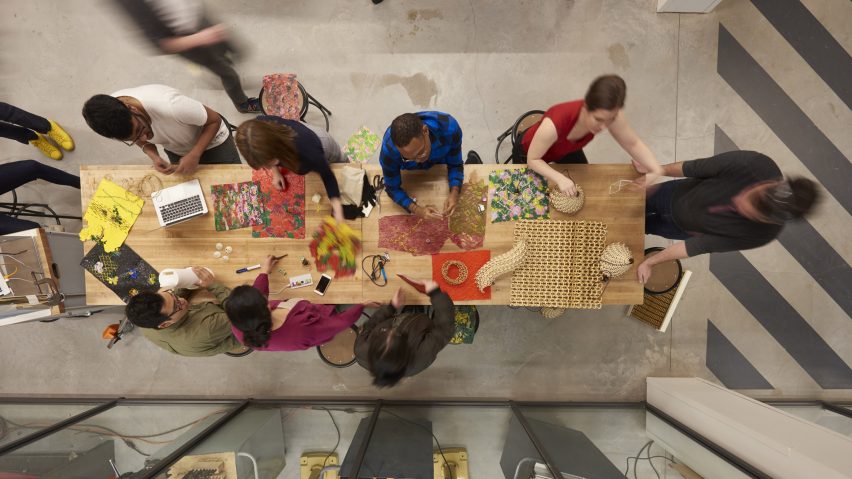
Nine design projects from The New School's Parsons School of Design students
A project exploring how architecture is integral to healing trauma and another investigating how bioluminescence could change our relationship to interiors is included in Dezeen's latest school show by students at the Parsons School of Design.
Also included is a project examining how the design of a shelter can support survivors of domestic violence and a device designed to slow desertification.
The New School's Parsons School of Design
University: The New School's Parsons School of Design
Course: Architectural Design (BFA), Architecture (MArch), Industrial Design (MFA), Interior Design (AAS), Interior Design (BFA), Interior Design (MFA), Lighting Design (MFA), Product Design (BFA)
Email: thinkparsons[at]newschool.edu
Statement:
"Parsons School of Design – consistently named the best art and design school in the United States and ranked third in the world – has sent change-making artists and designers out into the world since its founding in 1896.
"The School of Constructed Environments, one of the five schools within Parsons, guides students in creating socially and environmentally sustainable and technologically innovative buildings, interiors, lighting and products.
"In a time of unprecedented change, our BFA and MFA programmes foster the skills, values and vision that foster creative thinking and a more integrated, equitable and aesthetically beautiful world."
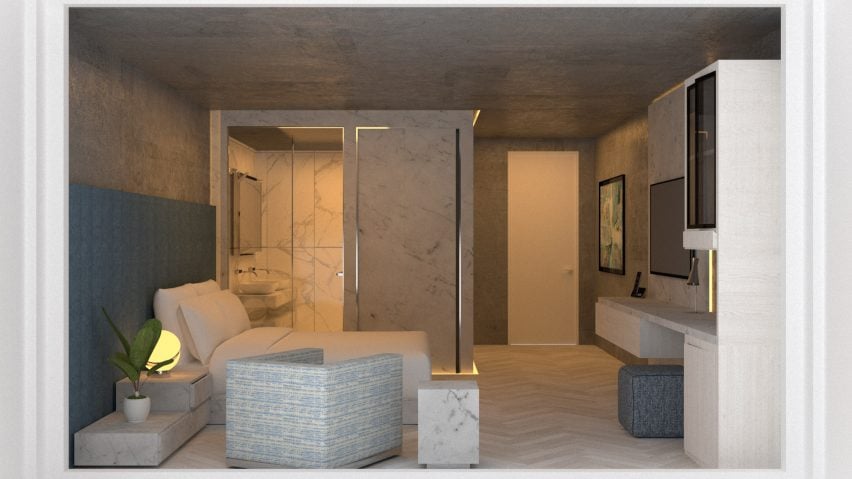
The Gallery Hotel by Mohamad Ali Ezzeddine
"Located at the corner of 20th Street and 10th Avenue, The Gallery Hotel offers a dynamic and cultural experience at the heart of Chelsea adjacent to the High Line. In a neighbourhood saturated with art galleries, The Gallery Hotel is thoughtfully designed to include an art gallery displaying local artists' work on the main floor.
"The lobby floor also features a reception area as well as a bar and lounge where guests can relax and enjoy the atmosphere. The second floor includes a restaurant with direct access to the High Line with the option to dine outdoors.
"The hotel has 24 guest rooms located on the third, fourth and fifth floors. To complement the neighbourhood's features, The Gallery Hotel will include a rooftop lounge area where guests can enjoy a panoramic view of all that Chelsea has to offer."
Student: Mohamad Ali Ezzeddine
Course: AAS Interior Design
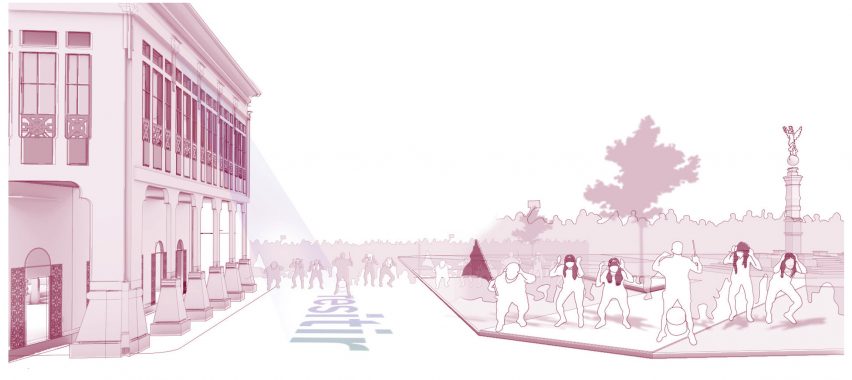
Resistance by Carmen Cordova
"Self-sacrifice: working without compensation, care and labouring towards the reproduction of society, have been attributed as characteristics of women's identity.
"It is not fair or sustainable to place the duty of maintaining society on an individual and as part of their identity. Without restructuring the exploitative relationships of care, societies can never promote the unity of community nor achieve greater equality.
"This is why it is important to build resistance towards traditional roles, to end this issue and direct society towards fairness. My capstone project aims to build solidarity between the women of El Salvador and bring visibility to the issues they face. For women to continue to resist and fight, it is essential to provide them with tools to overcome the hardships they may face."
Student: Carmen Cordova
Course: BFA Interior Design
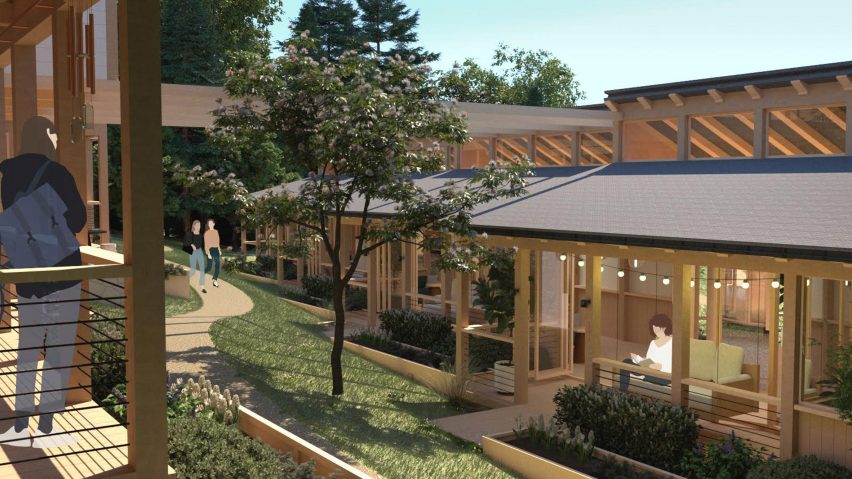
Why They Stay by Jenna Koss
"This is a real-life proposal for the Helpmate Domestic Violence Shelter in Asheville, North Carolina. The shelter needs to grow in both capacity and quality of its space and has purchased land on a slope to construct a purpose-built shelter.
"Working within the expansion committee, this ongoing project investigates how the shelter can be designed to provide safety to inhabitants from both illness and abuse while enhancing conditions that promote healing.
"This project also proposes how interior space can be layered in a way that empowers a survivor to form connections, reclaim agency and build resilience over time."
Student: Jenna Koss
Course: MFA Interior Design
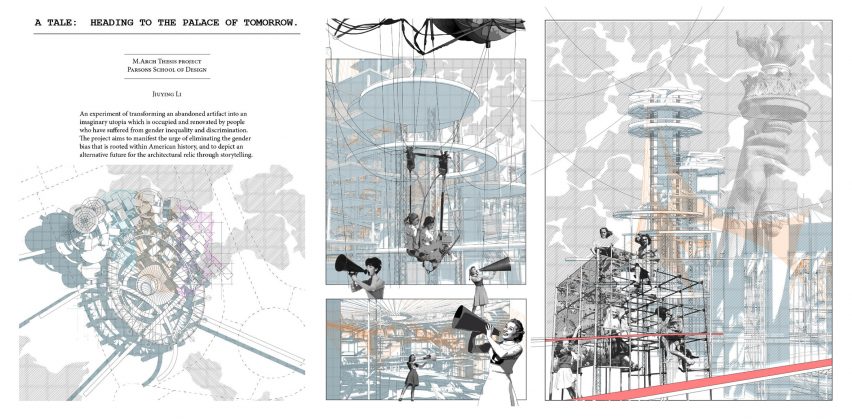
A Tale: Heading to the Tent of Tomorrow by Jiuying Li
"The thesis project is an experiment of transforming an abandoned artefact into an imaginary utopia which is occupied and renovated by people who have suffered from gender inequality and discrimination.
"The project aims to manifest the urge of eliminating the gender bias that is rooted within American history, and to depict an alternative future for the architectural relic through storytelling."
Student: Jiuying Li
Course: MArch
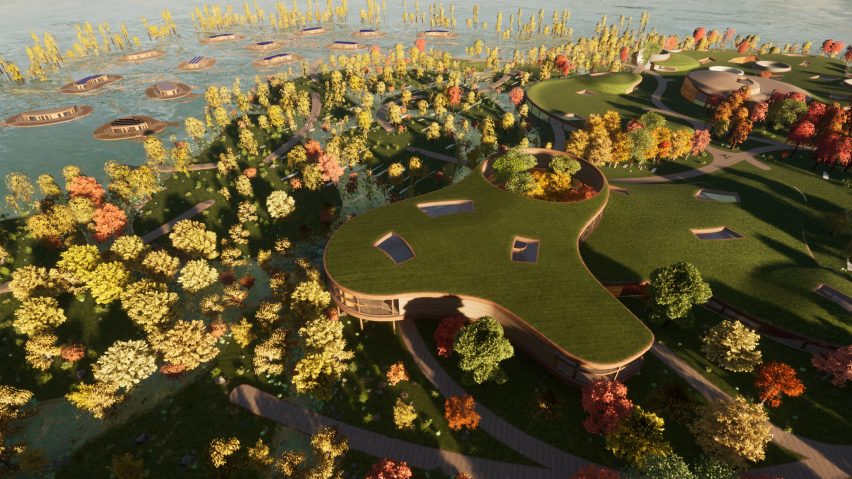
Flood Points: Redesigning Ekistics with time by Nalin Chahal, Eric Hu and Anthony Vesprini
"Ekistics, the science of human settlements, has been a pervasive and well-established foundation of human civilisation since agriculture began. The dominance of humanity over the natural world has primarily left this science in a perpetual, unchanging state. But, our anthropogenic effects on the environment and the natural world around us in the past century have upset the delicate balance of carbon that is critical to maintaining habitable conditions on our planet.
"Our devastating effect on the natural world must force us to reevaluate the ways we inhabit the land, how we engage with the world, and refound the idea of ekistics to adapt rather than withstand.
"Our proposal will drastically alter our site to consider this change, focusing on rising sea levels and how we must adapt to this change rather than build ever-growing sea walls – be it 55 years on a critical carbon emissions scenario (2075) or 95 years in a low emissions scenario (2115) for our site to flood.
"The first phase of the timeline would see the reintroduction of the natural habitat of Ditmars-Steinway back into the area, while also reimagining the site as an engaging park, educational space, market and community centre for Astoria. A vital component of this shift would be to drastically change the way energy is generated at our site to a more circular, sustainable and less carbon-intensive solution.
"The second phase of the timeline would include the flooding of the site due to rising sea levels. As the site floods, more of the land would be dedicated to housing the changing flora and fauna. During this period, our programmatic elements of the site would remain functional. The final phase of our timeline would see the flooding of the programmatic mounds, returning the land (and the flooded interiors) to the natural flora and fauna. During this phase, the only operable programme would be the research centre."
Students: Nalin Chahal, Eric Hu and Anthony Vesprini
Course: BFA Architectural Design
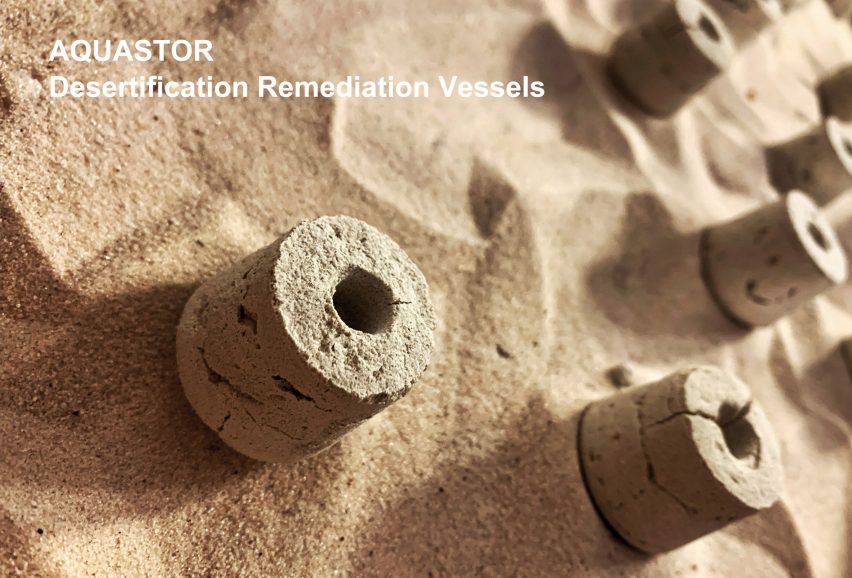
Aquastor by Zihao Fang
"Aquator is desertification remediation vessels produced using mixed materials from desert resources. Aquator vessels can promote soil growth in desert areas and slow the advance of desertification. It will be placed on the edge of the desert in a triangular arrangement with a spacing of one metre to build a barrier.
"The temperature difference between the inside and outside of the vessels allows external water vapour to enter the desert and reduce the evaporation rate. Eventually, the Aquator vessels will be completely degraded and turned into nutrients for the land."
Student: Zihao Fang
Course: MFA Industrial Design
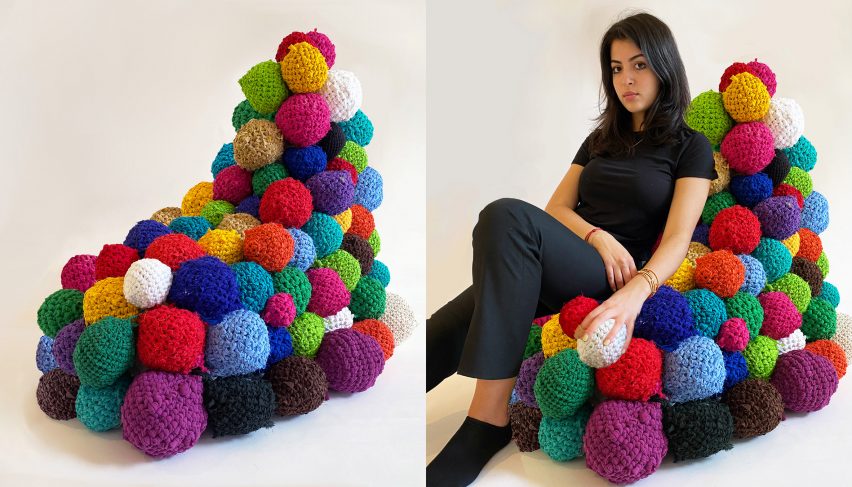
The CroChair by Daniela Solovey
"For my project, I chose to investigate crochet as a novel form of production by using the technique to weave together upcycled materials. I designed made-to-order furniture that facilitates a transitional nod to an analogue craft, offering its user a highly functional product with a unique aesthetic.
"It will benefit the design community by legitimising an often overlooked art form through the fusion of craft with traditional furniture design."
Student: Daniela Solovey
Course: BFA Product Design
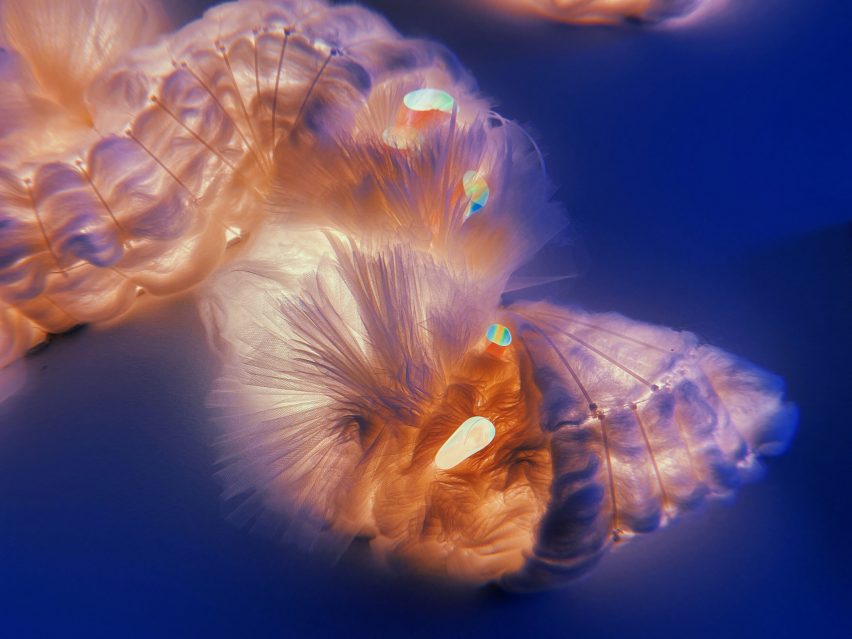
Bio Loose Sense by Jo Li
"During the pandemic, we are homebound, many of us working, living and relaxing indoors. At home, we have combined all functions of living. In my thesis, I want to introduce a new way of applying biomimetic design with light to separate the different functional zones and times in our house. If we consider temporal changes (time) as part of the biomimetic process, we must consider the lighting's control as the key to this application.
"Human activities include a rhythm similar to the rhythm of nature. Bio Loose Sense is a biomimetic design that encourages the connection between humans and nature and also keeps our senses activated.
"The design learns from natural phenomena, such as bioluminescent tides and organisms. It explores how we can use the potential of bioluminescence to change our relationship to lighting and interiors."
Student: Jo Li
Course: MFA Lighting Design
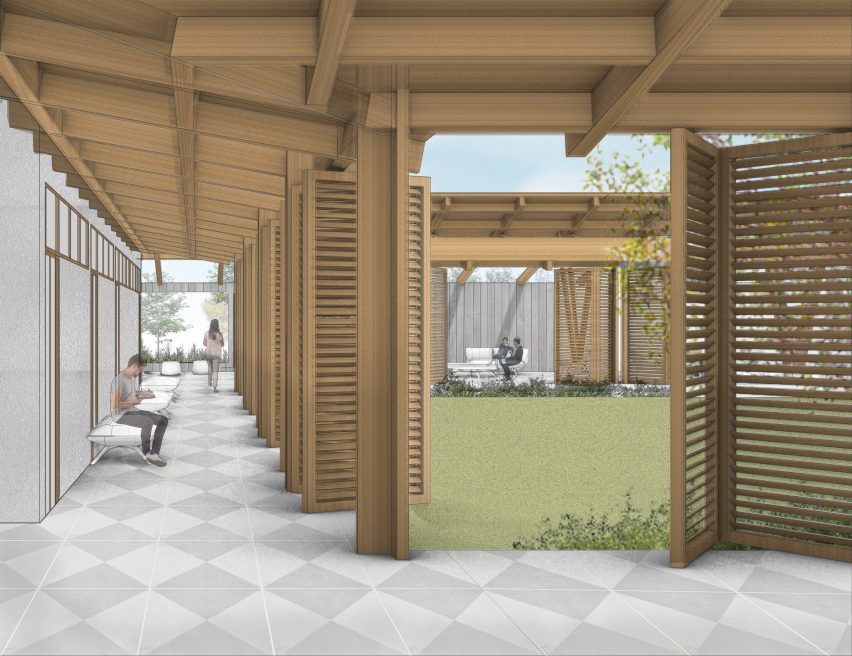
Healing Structures by Carmen Iris Ruiz Cruz
"The 6.4 magnitude earthquake that took place a year ago in Puerto Rico not only left the island's urban infrastructure compromised but challenged the survivors to recover from the physical and mental repercussions.
"The problem is that post-disaster response focuses on physical wellbeing, immediate solutions like shelter and overlooks mental wellbeing and invisible injuries like trauma, which have a long-term impact on the survivors.
"Architecture and lighting are integral to the healing process. Built spaces are not only meeting points, but environments where people share stories and attempt to heal one another through communal interaction. If healing is the goal, the quality of these spaces needs assessment and consideration."
Student: Carmen Iris Ruiz Cruz
Course: Dual Degree: MArch and MFA Lighting Design
Partnership content
This school show is a partnership between Dezeen and The New School's Parsons School of Design. Find out more about Dezeen partnership content here.